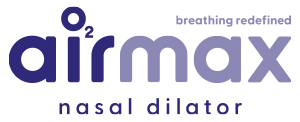Airmax spreaders showed the best results compared with other types
Source reference
Klaus Vogt, Kaspars Peksis, Yegor Safronov (2010)
Effective application of nasal dilators in snoring and mild sleep apnoea
Background
Nasal dilators are a non-invasive device, which may improve nasal breathing remarkably. They are used by sportsmen, but also by patients with impaired nasal breathing for different reasons. Snoring and even symptoms of mild sleep apnoea may be reduced, but the effect is not predictable. Publications reporting about the results of application are coming to different conclusions. It can be shown by measuring the effect of the dilator by means of 4-phase-Rhinomanometry.
Methodology
Prospective study performed from November 2009 to April 2010. During the study the users subjective opinions about comfort, effectiveness and side effects of nasal dilators were compared and analysed. Subsequently the effects of two nasal dilators were objectively analysed by means of 4-phase-Rhinomanometry. The study population were 24 people aged from 17 to 37 years old without serious health problems and without rhinological diseases.
Results
Most of the users considered subjectively the Breathe Right (79%) and Airmax (21%) dilators to be the most comfortable in use and effective in improving nasal breathing. Nozovent and Nasanita nose Butterfly appeared to have approximately the same effectiveness, but turned out to be more uncomfortable for everyday use and had more side effects or provoced inconvenient feelings. In the objective part of the study Breath Right, Airmax and breathing without nasal dilator were compared by means of rhinomanometry. Both devices reduce resistance parameters compared with breathing without device in VR in, LVR, LReff In, LReff, LREEFtotal parameters. The Airmax is more effective than Breath Right reducing these resistance parameters.
Conclusion
Nasal dilators may reduce the nasal resistance remarkably, but the reduction of the nasal resistance depends on the nasal pathology. The best effect can be achieved in widening the nasal entrance, in particular in so called “valve phenomenon”. The effect is predictable by 4-phase-Rhinomanometry. The improvement is better in inspiration as in expiration, because the nasal valve reduces the inspiratory airflow. To exclude the influence of the nasal cycle, it is recommended to calculate the Total Nasal Resistance or measure the resistance by Active Posterior Rhinomanometry.
